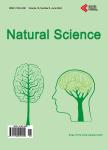Fossil middle triassic “sea cows” – placodont reptiles as macroalgae feeders along the north-western Tethys coastline with Pangaea and in the Germanic basin
Fossil middle triassic “sea cows” – placodont reptiles as macroalgae feeders along the north-western Tethys coastline with Pangaea and in the Germanic basin作者机构:不详
出 版 物:《Natural Science》 (自然科学期刊(英文))
年 卷 期:2011年第3卷第1期
页 面:9-27页
学科分类:1002[医学-临床医学] 100214[医学-肿瘤学] 10[医学]
主 题:Placodont Reptiles Triassic Convergent Evolutionary Ecological Adaptation Sirenia Macroalgae Feeders NW Tethys Shelf Palaeoecology
摘 要:The descriptions of fossil Triassic marine pla- codonts as durophagous reptiles are revised through comparisons with the sirenia and basal proboscidean mammal and palaeoenvironment analyses. The jaws of placodonts are conver- gent with those of Halitherium/Dugong or Mo- eritherium in their general function. Whereas Halitherium possessed a horny oral pad and counterpart and a special rasp-like tongue to grind seagrass, as does the modern Dugong, placodonts had large teeth that covered their jaws to form a similar grinding pad. The sirenia also lost their anterior teeth during many Millions of years and built a horny pad instead and specialized tongue to fed mainly on seagrass, whereas placodonts had only macroalgae availa- ble. Indirect evidence for Triassic macroalgae is provided by benthic palaeocommunities from different layers and extended European regions in the Germanic Basin. Studies of tooth wear stages for Placodus indicate that anterior teeth may have been used in a similar manner to the procumbent front teeth of modern Dugong. Paraplacodus and Placodus seem to have used these teeth as spatulas to dig out seaplants. Cyamodus and other placodonts such as Placochelys had smaller or reduced anterior teeth. The scarcity of highly worn palatine or maxillary and lower jaw dentary Placodus or Cyamodus teeth (less then 0.5%) suggests that they had a relatively soft diet. The seaplants would only have been squeezed in a similar feeding strategy to that of modern Dugong feeding on seagrass without jaw rotation and grinding. The phylogenetic trend in tooth reduction within the placodonts Paraplacodus, Placodus, especially in Cyamodus but also Placochelys, and Henodus within 11 My appears to have been a result of this plant-feeding adaptation and may even explain the origin or at least close relationship of the earliest Upper Triassic turtles as toothless algae and jellyfish feeders, in terms of the long-term convergent development with the sirens.



